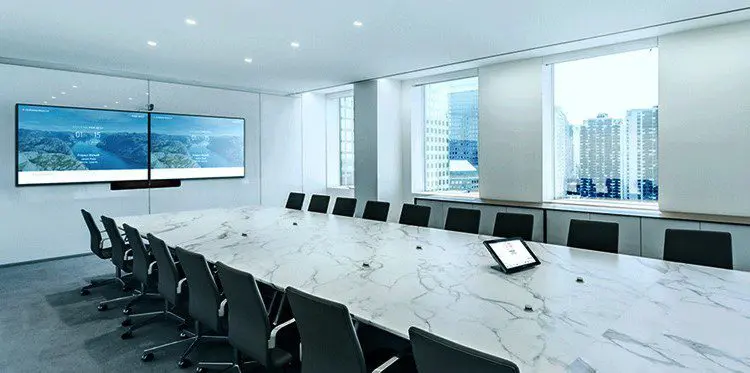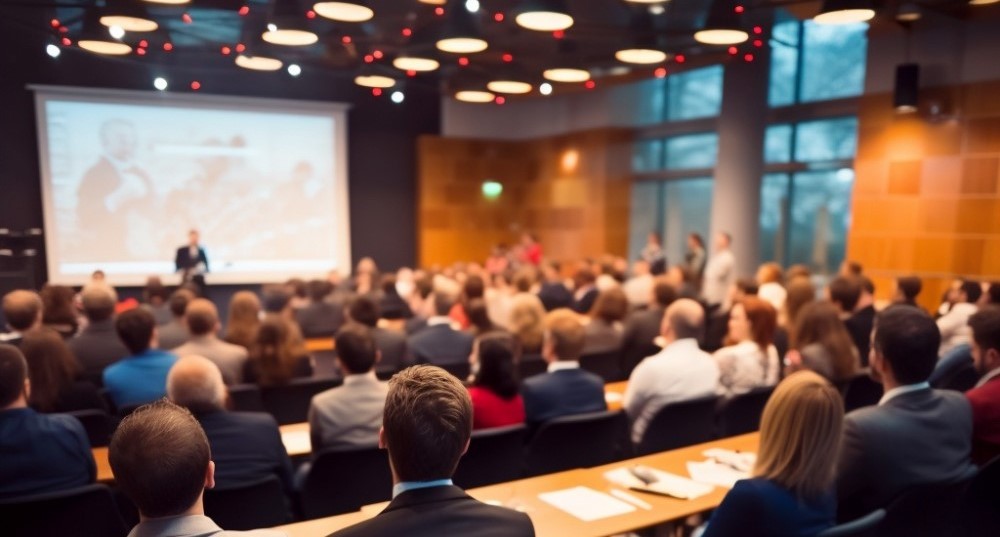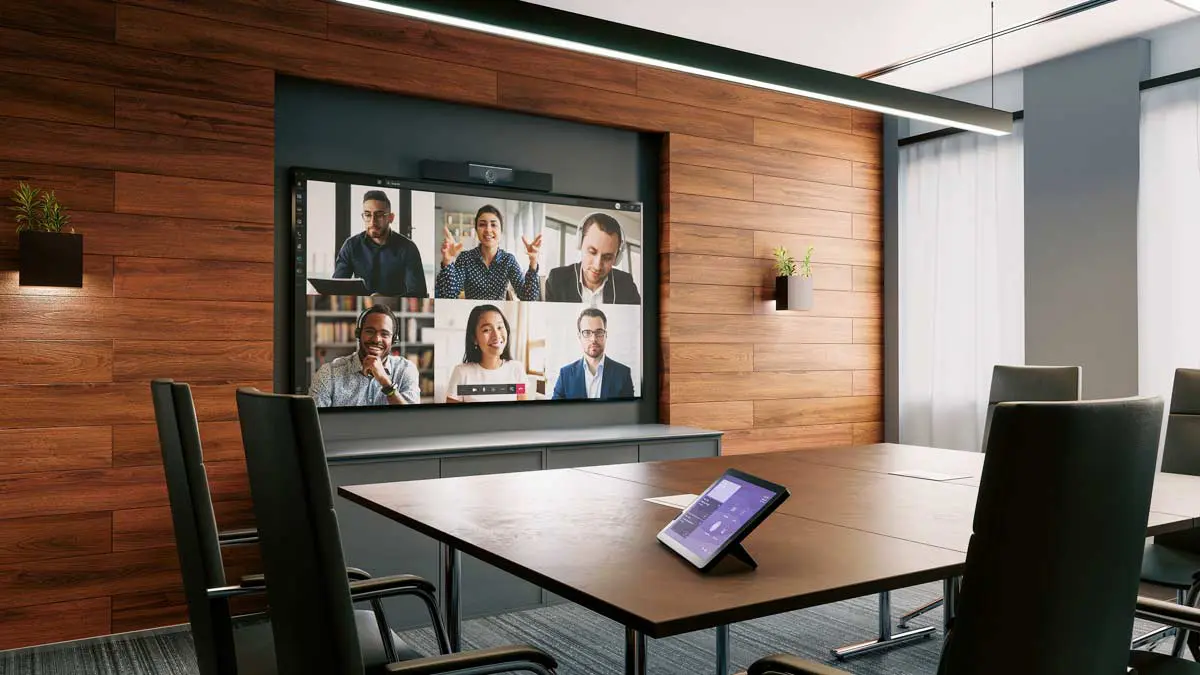Have you ever wondered if you are talking to a blank screen when a person on the other side is only barely visible on the video call? Did you have to peer close to the computer or zoom in on the content to see what’s written because of shadows or reflections from inconveniently placed lighting?
If you answered yes, you’re not alone.
Poor lighting is a growing problem in modern, hybrid workplaces. Numerous studies have shown that a lack of natural light and prolonged exposure to bright or dim lights affect employees. Now we have the added problem of impaired communications and poor collaboration in online meetings and video conferences due to poorly designed, placed, and implemented lighting. That’s why, as more companies become hybrid, the need for better lighting solutions cannot be emphasized enough.
Good lighting helps in:
- Improving productivity: According to the International Labour Organization’s study on working conditions in the garment industry, good factory lighting improved productivity by 10% and reduced errors by 30%. Good lighting has a similar effect as natural light. It enhances alertness and enables employees to focus on work.
- Motivating employees: Good lighting creates a positive environment that energizes and motivates employees to do their work.
- Optimizing energy bills: Companies often make the mistake of using poor lighting, like fluorescent lights, to reduce bills. However, this can sometimes be counterintuitive. Bad lighting can cost a lot. Companies can instead invest in good energy-saving lights that optimize energy and reduce costs.
- Deepening connection with other employees: Hybrid workplace employees rely on video calls to connect with other team members across various locations. Good lighting helps all the participants see each other clearly, build trust, and deepen bonds with each other.
Let’s look at the challenges companies face in using the right lighting solutions and their impact on employees.
Challenges Of Lighting Solutions
- Old lighting
Ever since Thomas Edison introduced the world to incandescent bulbs, offices worldwide have used it for several years. Then came the halogen and fluorescent lights. Some offices still use old fluorescent bulbs like T12, T8, and T5. Prolonged exposure to these bulbs could cause eye strain and headaches among employees. They also contain toxic material like mercury that could further affect employees’ health. These lights are also not very energy-efficient and have a short lifespan. They could increase the electricity bills significantly.
- Improper lighting ergonomics
Lighting ergonomics ensures the lights provide adequate lighting and prevent glares and shadows that could impact employees’ health and productivity. It optimizes light intensity, temperature, colour, and distribution. It determines the right amount of light and when and how it’s needed for employees to be productive.
Unfortunately, companies worldwide haven’t paid enough attention to lighting ergonomics. Lighting problems, such as too much or too little light, uneven distribution, and improper positioning, can negatively impact employees. Other issues, like harsh shadows, glare, and backlighting issues (too much light coming from behind), also affect employees.
- No controls for lighting
In a study conducted on UK office workers, 34% of employees complained that they had no control over lighting. This meant that employees had to bear too much or too little light at workplaces, which affected their well-being. Unfortunately, most companies still use old lighting solutions that have no control. Companies need to use modern lighting solutions to improve employees’ productivity and well-being and maximize energy consumption.
Modern-day lighting solutions come with smart sensors. For example, they can detect motion and adjust the lighting automatically to set it at the optimum level. Some companies use connected lighting solutions that empower employees to personalize their light settings and retrofittable lighting control solutions to optimize energy utilization. Solutions like these are the only ways to overcome lighting issues in workplaces.
Impact of Poor Lighting On Employees
The above challenges of lighting solutions have impacted employees in various ways.
- Low productivity
Irish writer George Bernard Shaw had a famous rotating table that moved in the direction of the light. This arrangement was believed to be one of the reasons for his creativity. Good lighting is vital for boosting productivity.
Wrong lighting solutions can impact productivity. First, prolonged exposure to dim lights distracts employees, as they can’t focus on the task for long. Second, employees may make mistakes or work slowly if exposed to harsh lighting solutions like fluorescent lights. These lights affect their eyes and reduce focus. Third, bad lighting can make employees sick and lead to high absenteeism.
- Poor health
Poor lighting solutions can lead to various health issues, such as:
- Eye strain: Constantly flickering lights or poorly lit workplaces make employees peer harder into the screen, leading to problems like burning eyes, dry eyes, and poor eyesight. Harsh lighting could create glares on computer screens and trigger migraines and headaches.
- Poor posture: Employees sometimes have to move closer to the screen or slouch forward if the workplace is dimly lit. Prolonged sitting positions like that could affect their posture.
- Depression: Dim or flickering lights make the environment dark, and the entire workplace look dull and depressing. This ultimately affects the mental health of employees.
- No connection among employees
Traditionally, employees would be physically present on the premises all the time. They could see each other, which fostered deeper connections among employees. In hybrid workplaces, employees work from different locations. They communicate over video calls. Poor lighting can impact the quality of video calls, lead to eye strain and discomfort, and create more disconnect between the participants. The participants cannot clearly see the facial expressions or gestures and get easily distracted if the lighting is not good.
- Prone to accidents
Slips and trips are not uncommon in workplaces with dim lights. Employees risk injuring themselves or falling if they work under poor light conditions. They could miss a step or accidentally step on that loose cable on the conference room floor. Additionally, human eyes take time to adjust from bright to dark areas and vice versa, leading to safety hazards. Installing good lights in accident-prone areas and dark conference rooms is crucial for employees’ safety.
- Low motivation
Seasonal affective depression is common worldwide. It occurs during specific seasons, like winter when sunlight is low. Workplaces with bad lighting solutions have the same impact on employees. They create an environment where employees don’t feel motivated to work. Employees feel disengaged and unsatisfied at their jobs when exposed to uncomfortable lighting solutions.
How Video Conferencing Lighting Solutions Can Solve This Problem
While companies have started installing smart lighting systems, video conferencing rooms remain largely ignored. As employees rely more on video conferencing to connect with other team members, companies must focus more on improving the lighting systems in those areas.
To begin with, companies can implement the following actionable tips to improve lighting:
- Adjust the position of the light source to avoid shadows and glare
- Balance the brightness and colour temperature of the light source to give a professional and balanced look
- Use ring lights, panel lights, etc, wherever needed to optimize lighting
But more importantly, companies must choose the right lighting solution to improve video conferencing quality.
At Resurgent, we provide an all-encompassing lighting solution for residential, commercial, and industrial spaces that perfectly balance improving workplace ambience and conserving energy.
To know more about how our lighting solutions can light up your hybrid workplace, contact us.



